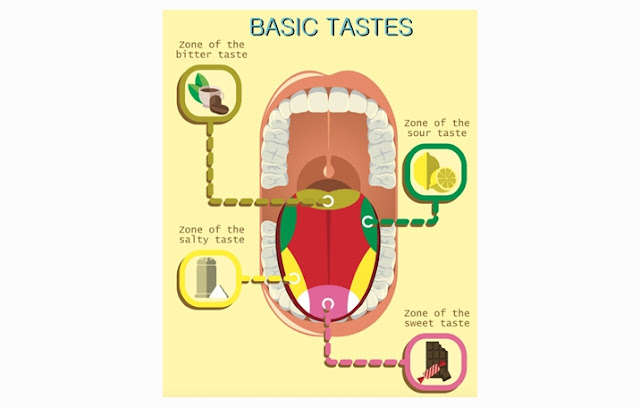A. UNDERSTANDING THE TONGUE
The tongue is an organ belonging to the five senses
as well as organs that support the digestive system. The tongue serves to give
a sense of taste to every object that goes into our mouths. Besides the tongue
also serves to support the process of chewing and swallowing. The tongue is
also often called lingual (Latin) or glossal (Greek). The tongue is a striated
muscle tissue (skeletal muscle) covered by mucous membranes.
B. FUNCTIONS OF TONGUE
The tongue has three main functions :
- As the sense of taste
- As the digestive organs to digest and swallow food
- As an organs that play a role in the speaking process
C. STRUCTURE OF TONGUE
Most of the tongue is composed of skeletal muscle,
there are two types of muscles in the tongue : extrinsic muscles of the tongue
and intrinsic muscles of the tongue. The tongue can move in any direction
because of these muscles. Nerves are responsible for the tongue is the
hypoglossal nerve. Intrinsic muscles of the tongue acts to change the size of the
tongue that is to lengthen, shorten or widen the tongue. While the extrinsic
muscles of the tongue acts to regulate the movement of the tongue in the oral
cavity.
1. Extrinsic
Muscles of The Tongue
- Genioglossus Muscle, serves to sticking the tongue. Often also referred to as safety muscle because it is the only muscles of the tongue that can move tongue to the forward.
- Hypoglossus Muscle, serves to suppress and retract tongue so that the back of the tongue is more concave.
- Styloglossus Muscle, serves to lengthen and pull the tongue back. These muscles form a basin tongue so that we can swallow easily.
- Palatoglossus Muscle, serves to lift the posterior (behind the tongue) and assist the swallowing process.
2. Intrinsic
Muscles of The Tongue
- Superior Longitudinal muscle, serves to retraction, widen the tongue, also raised and lowered the tip of the tongue.
- Inferior Longitudinal muscle, serves to retraction, widen the tongue, also raised and lowered the tip of the tongue.
- Tranverse linguae muscles, serves to lengthen and widen the tongue along with verticalis linguae muscles.
- Verticalis linguae muscles, serves to widen the tongue along with transverse linguae muscles.
On the surface of the tongue there is a special
section to receive chemical stimulation, this section referred to as the taste
buds. Each end of taste buds has a different sensitivity to stimuli that we
feel. Please observe the following image to locate the taste buds in accordance
with the taste receptors:
 |
| TONGUE TASTE ZONE |
- The bitter taste caused by stimulation of alkaloids. Examples found in coffee, caffeine, etc.
- The sweet taste caused by the OH groups in organic molecules. Examples contained in sugar, ketones, and certain amino acids.
- Salty taste stimuli generated by cations Na +, K + and Ca +.
- Acid taste stimuli generated by a hydrogen ion.
There are several types of papillae taste buds that
accommodates across the surface of the tongue. This papillae is a ciliated
epithelial cells that are shaped like protrusions. In humans, there are about
10,000 of the papillae of the tongue. There are 4 kinds of tongue papillae by
his form, namely:
 |
| PAPILLAE OF TONGUE |
1. Filiform
Papillae
Filiform Papillae is a papillae that have a thread-like
shape (fili = thread). This Papillae spread evenly across the surface of the
tongue. Papillae serves to receive touch and taste stimuli.
2. Circumvallate
papillae
Circumvallate papillae are round and arranged like
the letter V in the back of the tongue. In the human tongue, usually the number
of papillae circumvallate about 8-14 pieces.
3. Fungiform Papillae
Fungiform papillae is a kind of tongue papillae which
has the shape of mushrooms (fungi = fungus). Fungiform papillae scattered on
the side of the tongue and on the tip of the tongue.
4. Foliate
Papillae
Foliate papillae are very few in human beings, and
some even say that humans do not have this type of papillae. These papillae are
shaped like leaves on the tongue protrusion.
D. HOW TONGUES WORKS
Food and drinks are touching the tongue will enable
taster receptor that is sensitive to chemical stimulation. This impulse will be
transmitted to the brain as nerve impulses by nerve cells in the tongue. The
brain will receive this information and translate it so that we can taste the
drinks and food.


